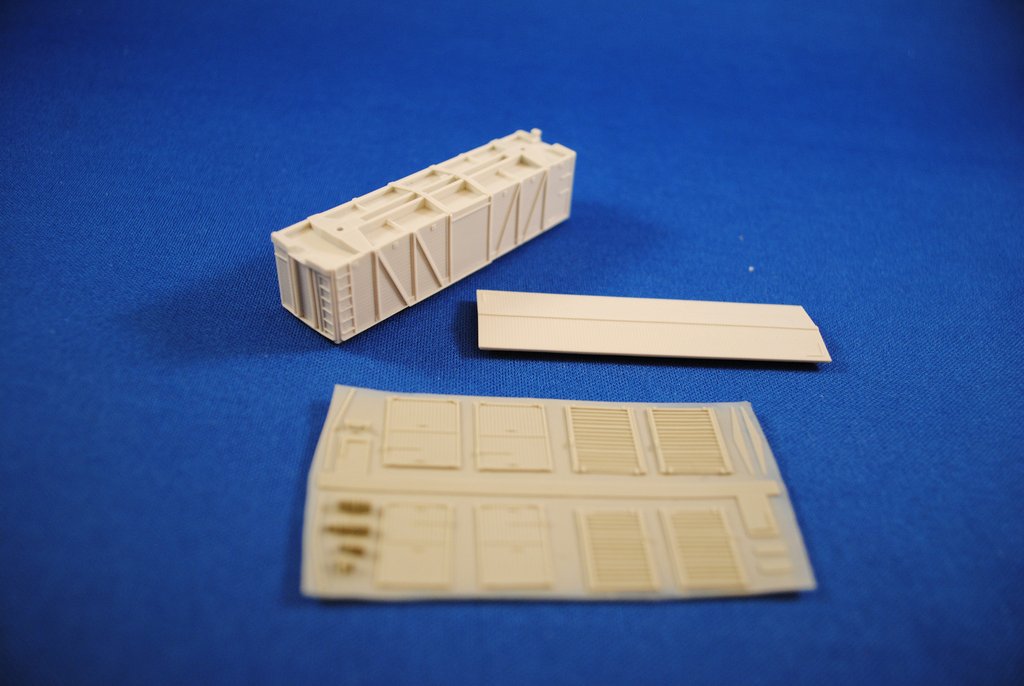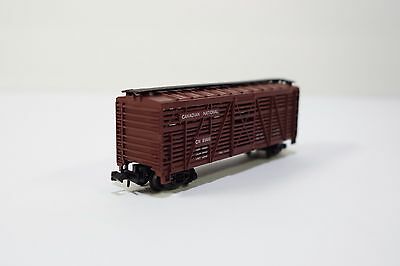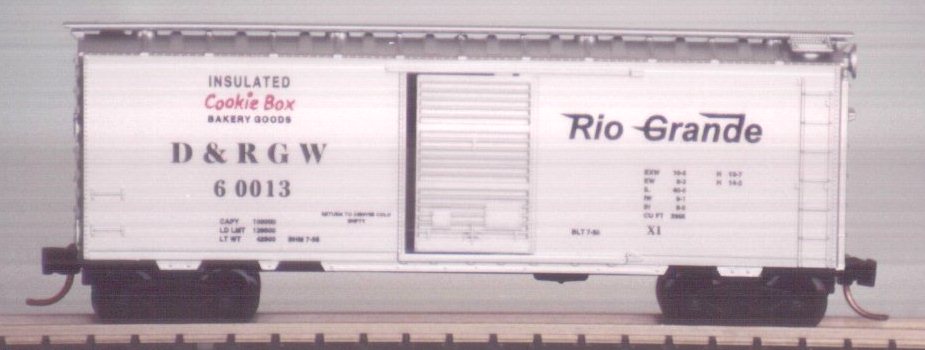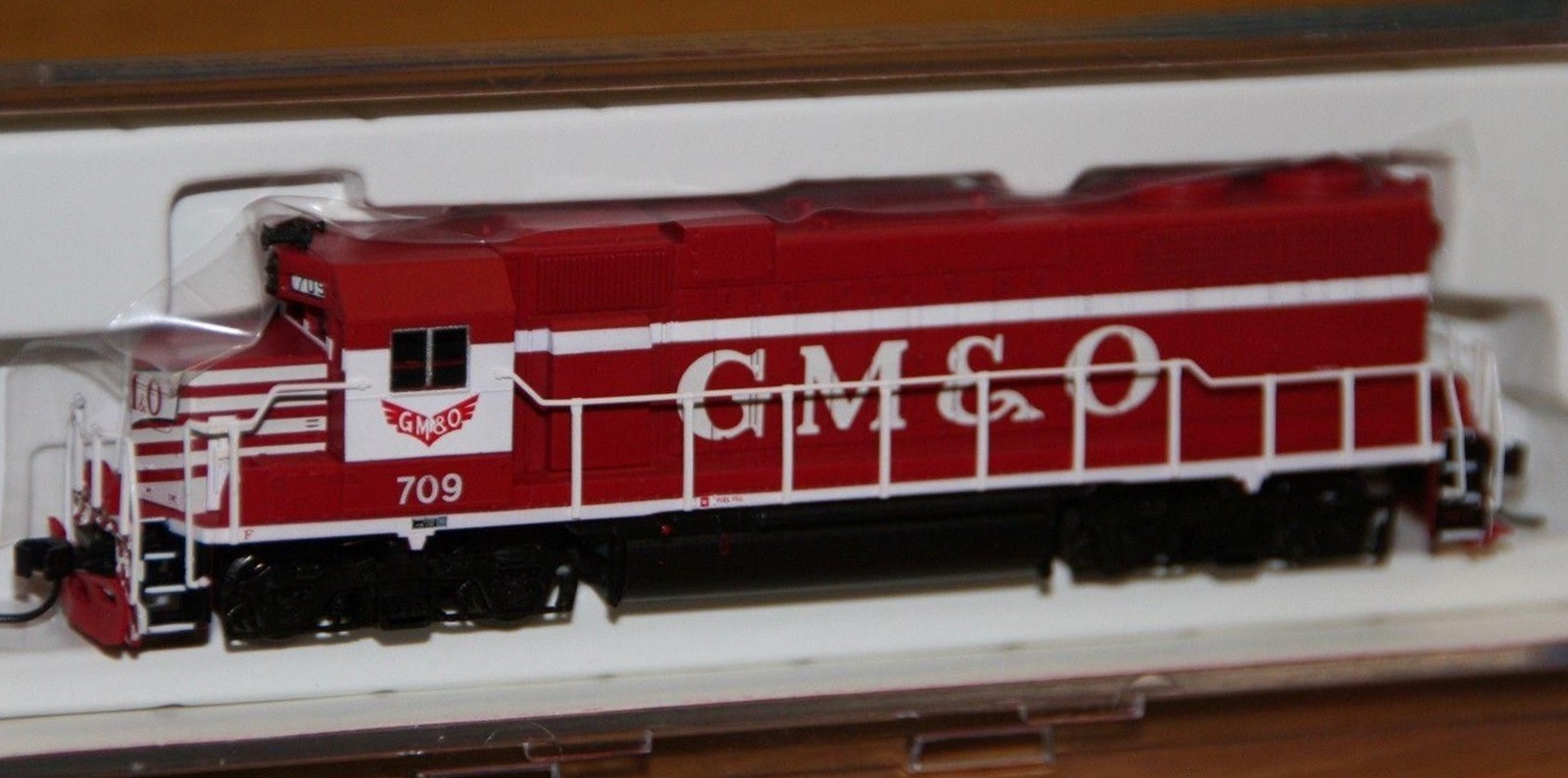Specific Item Information: CPR 36' Fowler Boxcar – Steel Roof Kit
The kit consists of resin castings, with the floor, sides and ends in one piece. The modeler adds the roof, door of choice (several provided), running boards, etc. Trucks, couplers and weight to be supplied by the modeler. No paint or decals included.
This model is typical of the 36' wooden boxcars that roamed the rails carrying freight all across Canada and the U.S.A. for half a century, a few lasting until the 1960's. These boxcars carried wheat and other grains to market along with manufactured goods of all kinds. 33,000 of these cars were built between 1896 and 1914. These wooden single-sheathed steel frame boxcars had a capacity of 40 tons and a tare weight of 20 tons and 2,448 cubic feet of space. They were outfitted with archbar Simplex trucks. In the 1920s and 1930s many of these cars were rebuilt with metal roofs.
Other railroads across the continent also used tens of thousands of similar cars. They were designed by W. E. Fowler, CPR Master Car Builder, who later patented this weight-saving design which became known as the Fowler boxcar. Prior to the Fowler design, boxcars typically had wooden structural members sandwiched between an interior and exterior wooden skin. The Fowler car eliminated the exterior layer of wood, producing a cheaper, lighter car that could carry a greater payload. This design also prevented grain leakage at seam between the floor and the side of the car.
The Fowler boxcars were generally used to carry grain and other dry bulk commodities until about 1960, when they began to be replaced by specialized top-load/bottom-discharge covered hopper cars. Dry bulk commodities shipped in boxcars were literally poured into the open doorway of the car, into which a bulkhead four to six feet high had been inserted to form a largely closed box. When the car arrived at its destination, it was usually unloaded by men with shovels. This was an expensive and laborious process, particularly in Canada where transportation of grains, ores and other dry bulk commodities were so significant to the economy.
The kit consists of resin castings, with the floor, sides and ends in one piece. The modeler adds the roof, door of choice (several provided), running boards, etc. Trucks, couplers and weight to be supplied by the modeler. No paint or decals included.
This model is typical of the 36' wooden boxcars that roamed the rails carrying freight all across Canada and the U.S.A. for half a century, a few lasting until the 1960's. These boxcars carried wheat and other grains to market along with manufactured goods of all kinds. 33,000 of these cars were built between 1896 and 1914. These wooden single-sheathed steel frame boxcars had a capacity of 40 tons and a tare weight of 20 tons and 2,448 cubic feet of space. They were outfitted with archbar Simplex trucks. In the 1920s and 1930s many of these cars were rebuilt with metal roofs.
Other railroads across the continent also used tens of thousands of similar cars. They were designed by W. E. Fowler, CPR Master Car Builder, who later patented this weight-saving design which became known as the Fowler boxcar. Prior to the Fowler design, boxcars typically had wooden structural members sandwiched between an interior and exterior wooden skin. The Fowler car eliminated the exterior layer of wood, producing a cheaper, lighter car that could carry a greater payload. This design also prevented grain leakage at seam between the floor and the side of the car.
The Fowler boxcars were generally used to carry grain and other dry bulk commodities until about 1960, when they began to be replaced by specialized top-load/bottom-discharge covered hopper cars. Dry bulk commodities shipped in boxcars were literally poured into the open doorway of the car, into which a bulkhead four to six feet high had been inserted to form a largely closed box. When the car arrived at its destination, it was usually unloaded by men with shovels. This was an expensive and laborious process, particularly in Canada where transportation of grains, ores and other dry bulk commodities were so significant to the economy.
Model Information: Freight Car body kits
Road Name History: The Canadian Pacific Railway (CPR), formerly also known as CP Rail (reporting mark CP) between 1968 and 1996, is a historic Canadian Class I railroad incorporated in 1881. The railroad is owned by Canadian Pacific Railway Limited (TSX: CP, NYSE: CP), which began operations as legal owner in a corporate restructuring in 2001.
Headquartered in Calgary, Alberta, it owns approximately 23,000 kilometres (14,000 mi) of track all across Canada and into the United States, stretching from Montreal to Vancouver, and as far north as Edmonton. Its rail network also serves major cities in the United States, such as Minneapolis, Milwaukee, Detroit, Chicago, and New York City.
The railway was originally built between Eastern Canada and British Columbia between 1881 and 1885 (connecting with Ottawa Valley and Georgian Bay area lines built earlier), fulfilling a promise extended to British Columbia when it entered Confederation in 1871. It was Canada's first transcontinental railway, but currently does not reach the Atlantic coast. Primarily a freight railway, the CPR was for decades the only practical means of long-distance passenger transport in most regions of Canada, and was instrumental in the settlement and development of Western Canada. The CP became one of the largest and most powerful companies in Canada, a position it held as late as 1975. Its primary passenger services were eliminated in 1986, after being assumed by Via Rail Canada in 1978. A beaver was chosen as the railway's logo because it is the national symbol of Canada and was seen as representing the hardworking character of the company.
The company acquired two American lines in 2009: the Dakota, Minnesota and Eastern Railroad and the Iowa, Chicago and Eastern Railroad. The trackage of the ICE was at one time part of CP subsidiary Soo Line and predecessor line The Milwaukee Road. The combined DME/ICE system spanned North Dakota, South Dakota, Minnesota, Wisconsin, Nebraska and Iowa, as well as two short stretches into two other states, which included a line to Kansas City, Missouri, and a line to Chicago, Illinois, and regulatory approval to build a line into the Powder River Basin of Wyoming. It is publicly traded on both the Toronto Stock Exchange and the New York Stock Exchange under the ticker CP. Its U.S. headquarters are in Minneapolis.
After close of markets on November 17, 2015, CP announced an offer to purchase all outstanding shares of Norfolk Southern Railway, at a price in excess of the US$26 billion capitalization of the United States-based railway. If completed, this merger of the second and fourth oldest Class I railroads in North America would have formed the largest single railway company on that continent, reaching from the Pacific coast to the Atlantic coast to the Gulf Coast. The merger effort was abandoned by Canadian Pacific on April 11, 2016, after three offers were rejected by the Norfolk Southern board.
Read more on Wikipedia and on Canadian Pacific official website.
Headquartered in Calgary, Alberta, it owns approximately 23,000 kilometres (14,000 mi) of track all across Canada and into the United States, stretching from Montreal to Vancouver, and as far north as Edmonton. Its rail network also serves major cities in the United States, such as Minneapolis, Milwaukee, Detroit, Chicago, and New York City.
The railway was originally built between Eastern Canada and British Columbia between 1881 and 1885 (connecting with Ottawa Valley and Georgian Bay area lines built earlier), fulfilling a promise extended to British Columbia when it entered Confederation in 1871. It was Canada's first transcontinental railway, but currently does not reach the Atlantic coast. Primarily a freight railway, the CPR was for decades the only practical means of long-distance passenger transport in most regions of Canada, and was instrumental in the settlement and development of Western Canada. The CP became one of the largest and most powerful companies in Canada, a position it held as late as 1975. Its primary passenger services were eliminated in 1986, after being assumed by Via Rail Canada in 1978. A beaver was chosen as the railway's logo because it is the national symbol of Canada and was seen as representing the hardworking character of the company.
The company acquired two American lines in 2009: the Dakota, Minnesota and Eastern Railroad and the Iowa, Chicago and Eastern Railroad. The trackage of the ICE was at one time part of CP subsidiary Soo Line and predecessor line The Milwaukee Road. The combined DME/ICE system spanned North Dakota, South Dakota, Minnesota, Wisconsin, Nebraska and Iowa, as well as two short stretches into two other states, which included a line to Kansas City, Missouri, and a line to Chicago, Illinois, and regulatory approval to build a line into the Powder River Basin of Wyoming. It is publicly traded on both the Toronto Stock Exchange and the New York Stock Exchange under the ticker CP. Its U.S. headquarters are in Minneapolis.
After close of markets on November 17, 2015, CP announced an offer to purchase all outstanding shares of Norfolk Southern Railway, at a price in excess of the US$26 billion capitalization of the United States-based railway. If completed, this merger of the second and fourth oldest Class I railroads in North America would have formed the largest single railway company on that continent, reaching from the Pacific coast to the Atlantic coast to the Gulf Coast. The merger effort was abandoned by Canadian Pacific on April 11, 2016, after three offers were rejected by the Norfolk Southern board.
Read more on Wikipedia and on Canadian Pacific official website.
Brand/Importer Information: Kaslo Shops Distributing was formed in 1998 in an effort to supply the modelling community with top quality parts and kits.
We specialize in:
- Detail Parts
- Locomotive Resin Kits
- Cab Kits
We are always looking for new ideas and new projects - please contact us with any suggestions or requested kits!
We specialize in:
- Detail Parts
- Locomotive Resin Kits
- Cab Kits
We are always looking for new ideas and new projects - please contact us with any suggestions or requested kits!
Item created by: Powderman on 2017-12-26 18:42:13. Last edited by gdm on 2020-07-05 08:49:50
If you see errors or missing data in this entry, please feel free to log in and edit it. Anyone with a Gmail account can log in instantly.
If you see errors or missing data in this entry, please feel free to log in and edit it. Anyone with a Gmail account can log in instantly.









